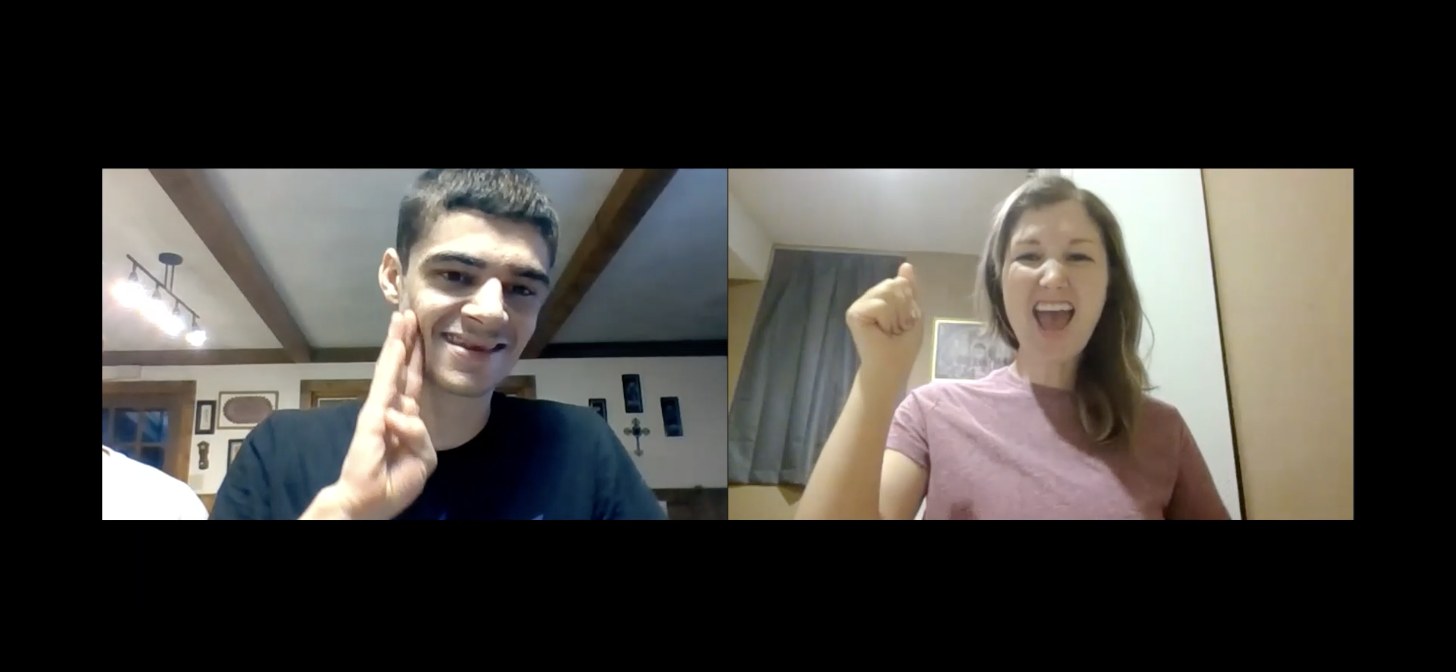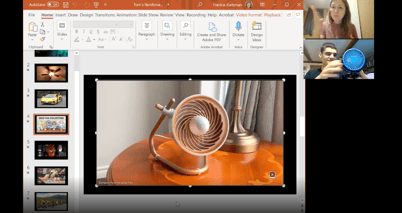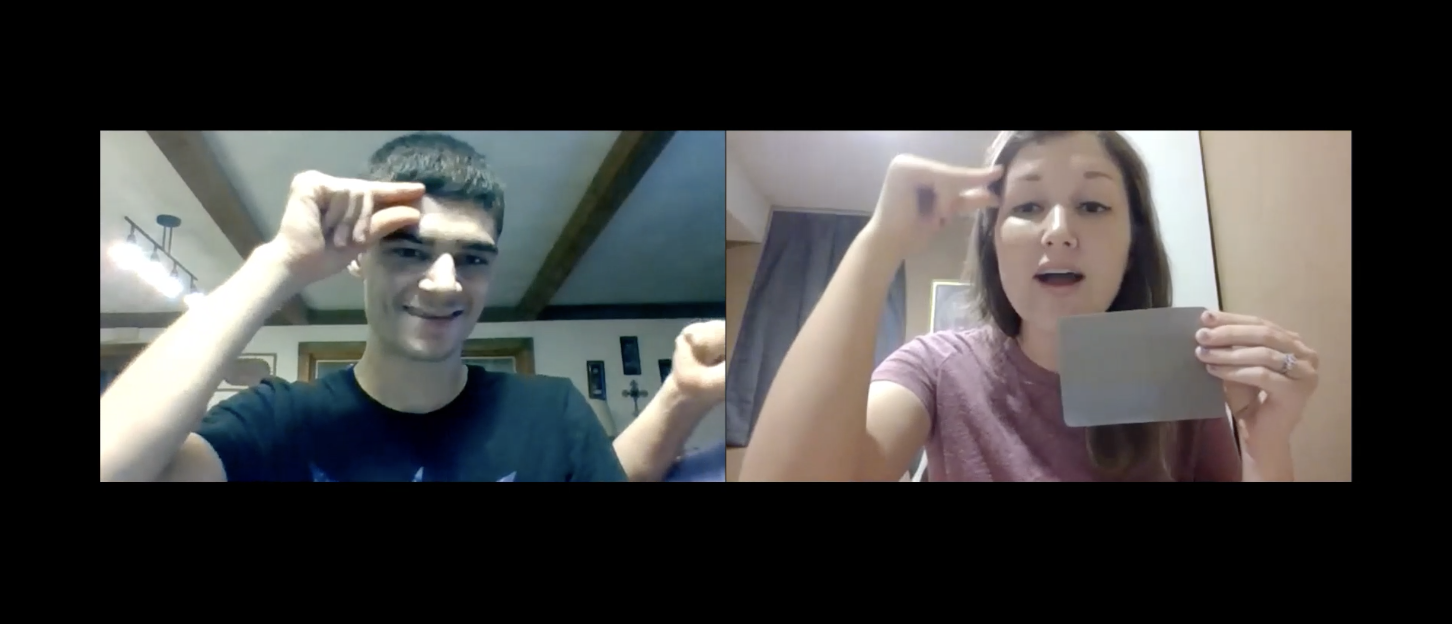Autism and Teletherapy: It’s Working!
Using the ARIS® Academic Readiness Intervention System in a Virtual Setting With the STAGES® Learning Line Platform
I’ve seen the research, but never actually bought in until I experienced it. I’m talking about teletherapy. If you’ve followed any of my other posts about ARIS, then you’ll know I have been like a kid in a candy store—and now I’m finally getting to begin some implementation.
Like many educators in the past year, I stumbled on virtual instruction purely by necessity. I needed to find a time and way to start working with my brother Tommy on some of the ARIS lessons, but our schedules weren’t matching up. He’s in a residential setting where staff members rotate or switch shifts, or he visits my parents on their farm. When he is at his group home, I might be busy juggling my two kids’ schedules, so it just seemed like a nightmare to find a time to actually start working with him. Enter in, teletherapy.
I’ll be honest, when I first set up a session with my parents, I prefaced it by telling them I wasn’t sure it would work at all. Deaf and severely autistic, Tommy is lovingly described by my parents as “Roger Rabbit.” He’s constantly on the move and in his 29 years, has really only conversed with me on a needs basis. Even those conversations are pretty short before he’s off to the next thing. Pair that with the fact that he has never received ABA services or participated in Zoom and I knew I was living on a prayer.
Getting Ready for a Virtual Session
 To prepare for my first session, I started by getting reinforcers ready if by some miracle he would actually attend and engage with me. My brother is incredibly interested in machines or things that spin—fans, dishwashers, lawnmowers, bikes—and the predictable excitement of rodeo and organized sports. I made a “Tommy’s Greatest Hits” PowerPoint that I could quickly switch to for the videos when reinforcement was necessary.
To prepare for my first session, I started by getting reinforcers ready if by some miracle he would actually attend and engage with me. My brother is incredibly interested in machines or things that spin—fans, dishwashers, lawnmowers, bikes—and the predictable excitement of rodeo and organized sports. I made a “Tommy’s Greatest Hits” PowerPoint that I could quickly switch to for the videos when reinforcement was necessary.
Next, I had to think about what lesson to teach him. His limited verbal skills and deafness made it a bit challenging to consider at first. Since this was just a test run and I wasn’t “bought in” yet, I decided to teach him expressive colors. He already knows how to sign a lot of different colors, but I wanted to target “gray” and “brown.” He has pretty strong imitation skills already so I thought those prompts I provided on the screen, in addition to my parents seated next to him to prompt as needed, might allow expressive teaching to be the best dipstick for seeing if this is a viable option for him.
When the session started, it was like magic for me. Something just clicked for him. Our first session was just a bit over 15 minutes and those were some of the most incredible moments I’ve shared with my brother. Not only was he actually learning how to say/sign new or rarely used vocabulary, but he was really watching me and communicating with me.

Making Connections
Our session was not textbook-perfect by any means, but the connections I saw him making gave me hope and even made me excited for future progress.
- During one of my run-throughs, I had him label a cat figurine and he made a point to show me a picture of a cat that he’d drawn and some letters he’d copied to accompany his picture. He also pointed out the window on the farm when he labeled a cow—recognizing that there are a lot of cows right outside his front door!
- Much to my parents' chagrin, one of the things I had him label was a cookie. He made a point to remind them that their cookie jar was empty….. He’s definitely got his priorities straight!
 Later on during one of his reinforcement videos, he made a point of showing me a fan he had recently added to his collection and was able to talk about the colors of the fans in the videos and the one he had.
Later on during one of his reinforcement videos, he made a point of showing me a fan he had recently added to his collection and was able to talk about the colors of the fans in the videos and the one he had.
His building connections between the things I was teaching him made me feel like we were having an actual conversation about what was going on in his world. His level of focus was incredible and he was thinking about the information on a deeper level than simply recalling it.
Take-Aways and Next Steps
I was completely blown away and have watched my recorded session with Tommy multiple times. I just played it again. Seeing his engagement, joy, and learning throughout the process warms my heart and confirms that ARIS can work in a virtual setting.
I have already started to coordinate and schedule follow-up sessions with my parents. Next up, we will start to target those lessons that I’ve mentioned in a previous post on prioritizing skills and being realistic. The biggest challenge I think will be remotely teaching things like matching and receptive identification skills when he doesn’t have the materials there with him.

The GOOD NEWS is that Stages Learning has a virtual platform called Stages Learning Line that allows educators to more easily teach those skills that are harder to get across without the facilitator being there in person. The platform has built-in prompting systems, and readily available reinforcements in the app itself, and ensures that the already-great ARIS lessons are transferable to a video session.
So I will continue to plug away with using ARIS in Zoom sessions with my brother following along with the lesson guides in the folder on this online platform.
If you’re like I was—not totally sold on implementing ARIS online—check out my session with Tommy to see some of the key moments I described in action. Then, you might become a believer like me!
Have you used ARIS for students online? What has your experience been? What features are you hoping for or looking forward to in the Stages Learning Line online platform?

Frankie Kietzman, Ed.S.
Frankie Kietzman is a Sales Development Associate for STAGES Learning with experience teaching as an elementary teacher, self-contained autism teacher for elementary and secondary students, autism specialist and coach for teachers dealing with challenging behaviors. Frankie’s passion for supporting children and adults with autism originates from growing up with her brother who is deaf and has autism. As one of her brother’s legal guardians, she continues to learn about post-graduate opportunities and outcomes for people with autism. Frankie has a Bachelor’s degree from Kansas State University in Elementary Education, a Master’s degree in high and low incidence disabilities from Pittsburg State University and in 2021, completed another Master’s degree in Advanced Leadership in Special Education from Pittsburg State University.



